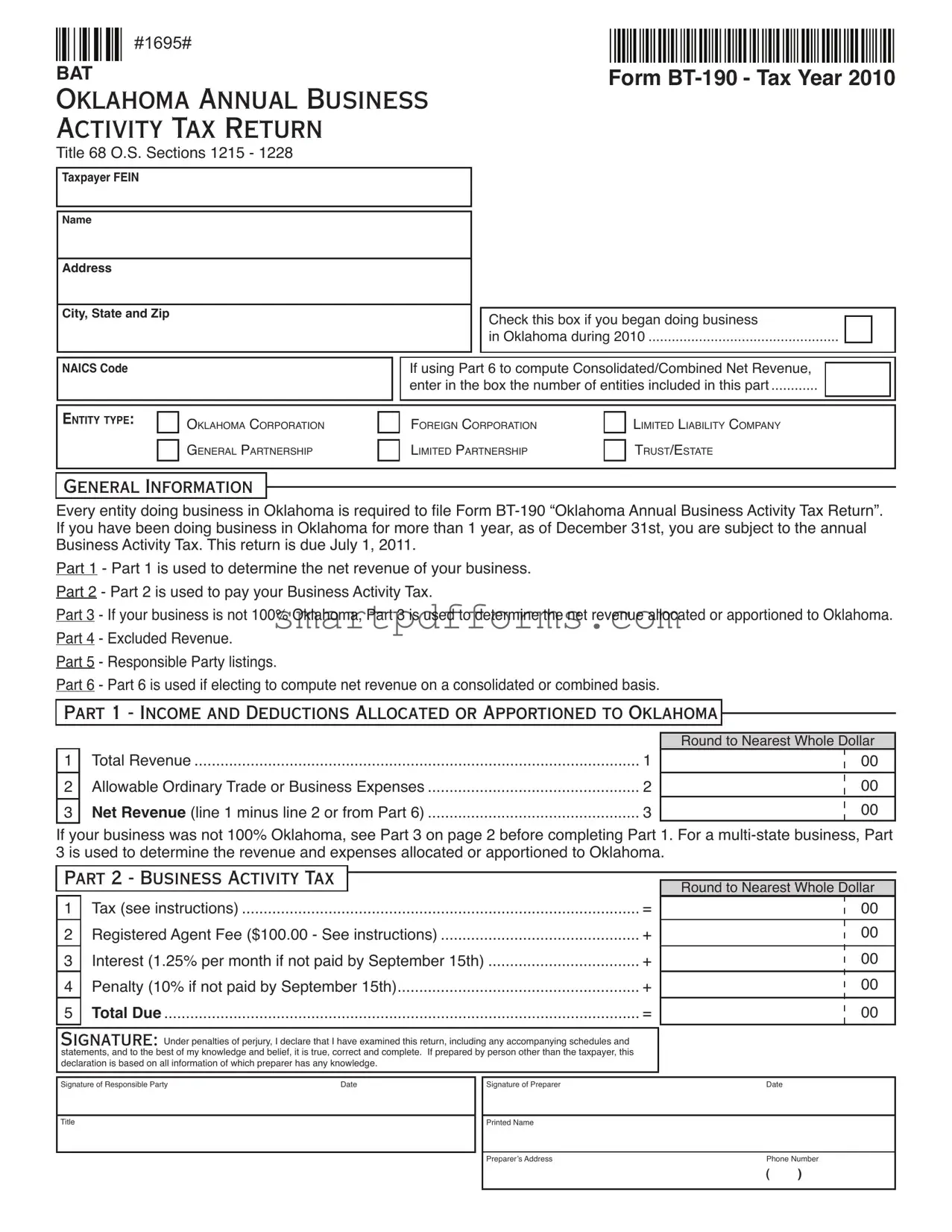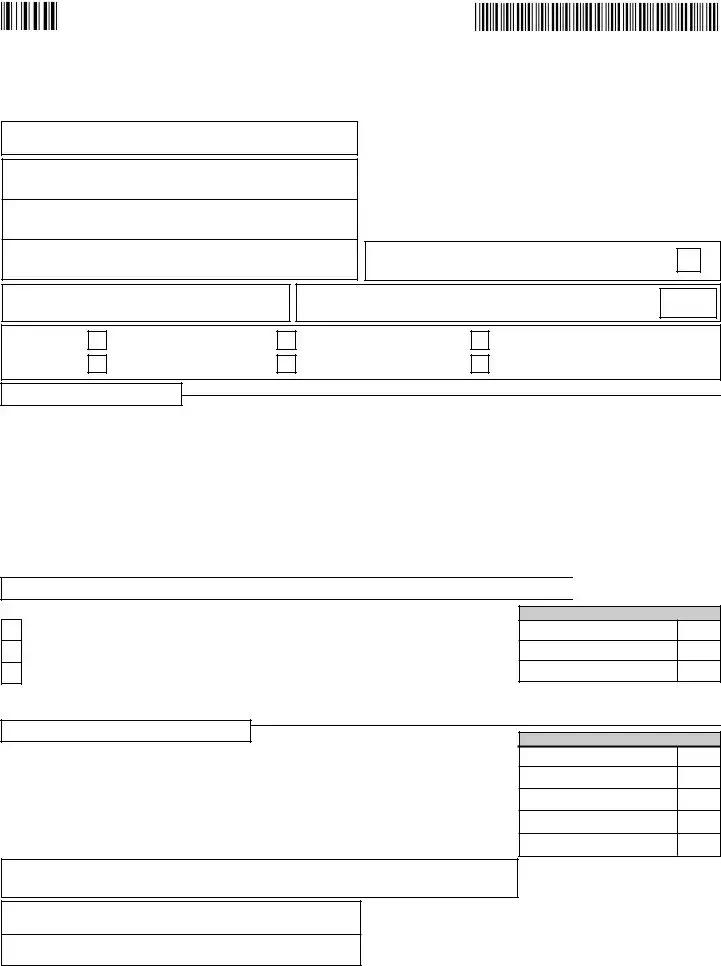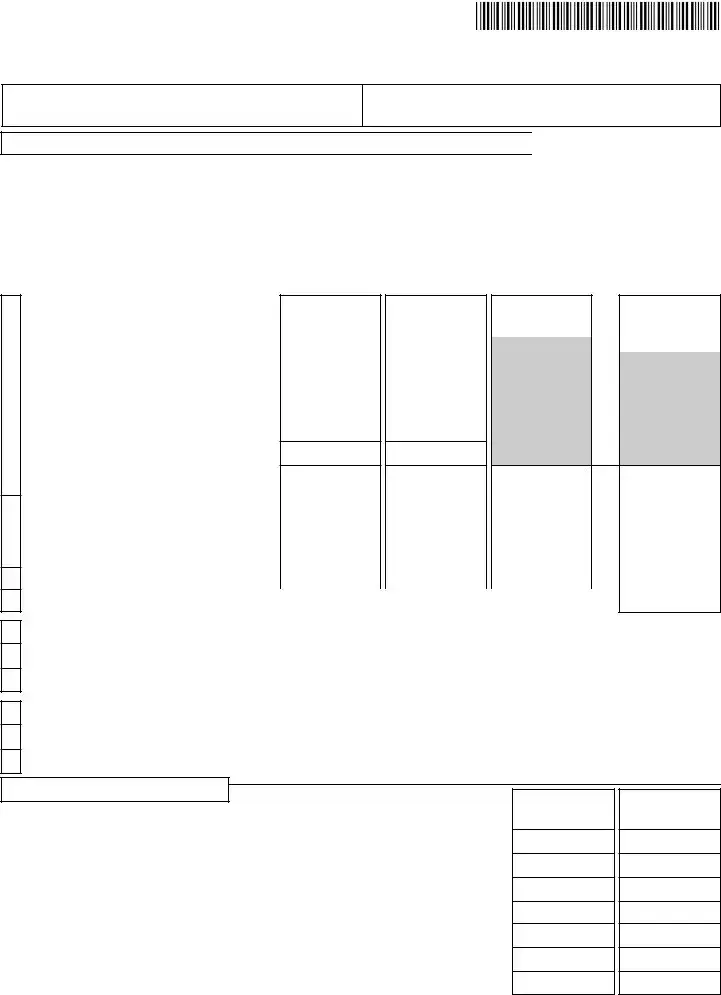PART 3 - MULTI-STATE BUSINESS (CONTINUED)
lines 1 and 2:
The Property and Payroll factors are determined as provided for in Title 68 O.S. Section 2358.
•Column A - Total Revenue within Oklahoma is your total revenue from activities performed in Oklahoma. See the instructions for Part 1, line 1 to determine “Total Revenue”.
•Column B - Total Revenue within and without Oklahoma is your total revenue from activities performed everywhere. See the instructions for Part 1, line 1 to determine “Total Revenue”.
line 8:
Enter the allowable ordinary trade or business expenses from your business activity both within and without Oklahoma. See the instructions for Part 1, line 2 to determine “allowable ordinary trade or business expenses”.
PART 4 - EXCLUDED REVENUE INSTRUCTIONS:
(If iling consolidated/combined [Part 6], complete Part 4 for each entity, as applicable.)
List separately each item of revenue not included in Part 1 “Total Revenue”. A list of excludable revenue is found in the
instructions for Part 1, line 1.
•If your business was 100% Oklahoma, enter the same amount in both columns.
•If your business was not 100% Oklahoma, enter the total amount of excludable revenue from your operations ev- erywhere in Column A. multiply the amount reported in Column A by the apportionment factor from Part 3, line 4 and enter the result in the Oklahoma column (Column B).
PART 5 - RESPONSIBLE PARTY INSTRUCTIONS:
(If iling consolidated/combined [Part 6], complete Part 5 for each entity, as applicable.)
•Corporations (Both C and Subchapter S) - Enter the current oficers effective as of December 31, 2010. Include name, title, address, phone number and Social Security Numbers/FEINs. Oficers include, but are not limited to, president, vice president, secretary and treasurer. list registered agent if applicable.
•limited liability Companies - Enter all current members of the limited liability Company effective as of December 31, 2010. Include name, title, address, phone number and Social Security Numbers/FEINs.
•Partnerships - Enter all current partners of the Partnership effective as of December 31, 2010. Include name, title, ad- dress, phone number and Social Security Numbers/FEINs.
•Business Trusts - Enter all current trustees and beneiciaries of the trust effective as of December 31, 2010. Include name, title, address, phone number and Social Security Numbers/FEINs.
please include Social Security Numbers of Responsible parties.
If non-resident oficer with no Social Security Number (SSN) note “NRA” for SSN.
710:1-3-6. Use of Federal Employer Identiication Numbers, Social Security Numbers mandatory.
All returns, applications, and forms required to be iled with the Oklahoma Tax Commission (Commission) in the adminis- tration of this State’s tax laws shall bear the Federal Employer’s Identiication Number(s) or the Social Security Ac- count Number (or both) of the person, irm, or corporation iling the item and of all persons required by law or agency rule to be named or listed. If more than one number has been issued to the person, irm, or corporation, then all numbers will be required. [Source: Amended at 16 Ok Reg 2628, eff 6-25-99]
710:1-3-8. Conidentiality of records.
All Federal Employer’s Identiication and/or Social Security Account Numbers are deemed to be included in the coniden-
tial records of the Commission.
If more space is needed attach a schedule.
This return must be iled by July 1, 2011.
Mail completed Form BT-190 to:
Oklahoma Tax Commission
Post Ofice Box 26930
Oklahoma City, OK 73126-0930




 #1695#
#1695#
 Indicate the method used to allocate expenses to Oklahoma: ___________________________________________
Indicate the method used to allocate expenses to Oklahoma: ___________________________________________
 #1695#
#1695#
 #1695#
#1695#

